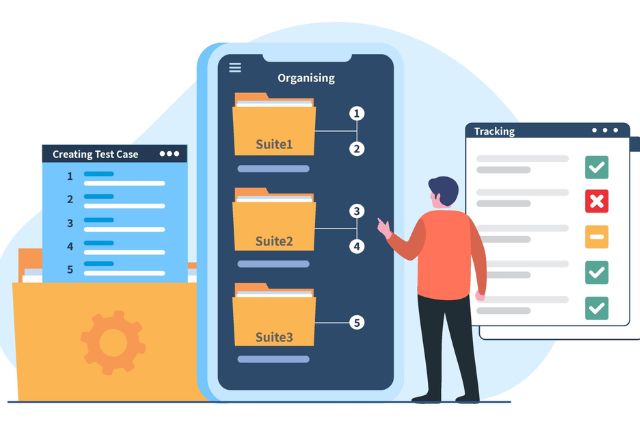
Key Services: Manual Testing
Background:
The ERP project, a large-scale initiative aimed at transforming internal operations for enhanced efficiency, posed significant testing challenges due to its complex nature and widespread impact across multiple departments. Manual testing emerged as the primary approach to ensure the quality and reliability of the system.
Objective:
To establish an effective framework for manual testing and enhance testing efficiency through the implementation of comprehensive test metrics.
Challenge:
1. Limited visibility into testing progress and coverage.
2. Difficulty in identifying bottlenecks and areas requiring additional focus.
3. Inadequate data for informed decision-making and resource allocation.
Our Solution:
Implementing a robust set of test metrics tailored to the specific needs of the ERP project:
1. Test Case Execution Metrics:
- Track the number of test cases executed daily, weekly, and monthly.
- Monitor test case pass rates to assess overall test coverage and identify areas for improvement
2. Defect Management Metrics:
- Capture the number of defects identified during testing.
- Analyse defect resolution times to evaluate the efficiency of the defect management process.
3. Test Cycle Time Metrics:
- Measure the time taken to complete each testing cycle.
- Identify trends in test cycle times to optimize testing schedules and resource allocation.
4. Requirements Traceability Metrics:
- Assess the percentage of test cases mapped to project requirements.
- Ensure comprehensive coverage of project specifications and minimize the risk of undocumented functionalities.
5. Test Productivity Metrics:
- Calculate the average time taken to execute a test case.
- Evaluate tester productivity and identify opportunities for streamlining testing processes.
Business Outcome:
- Improved Visibility: The implementation of test metrics provided stakeholders with real-time insights into testing progress and coverage, enabling proactive decision-making and resource allocation.
- Enhanced Efficiency: Identification of bottlenecks and inefficiencies allowed for targeted interventions, resulting in streamlined testing processes and reduced cycle times.
- Quality Assurance: Increased test coverage and rigorous defect management led to higher-quality deliverables, minimizing post-deployment issues and enhancing user satisfaction.


